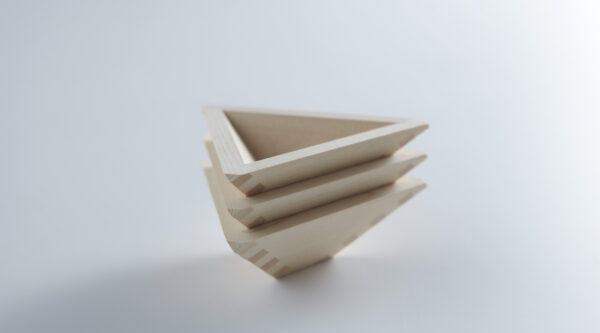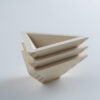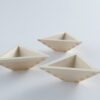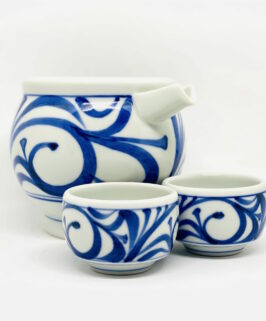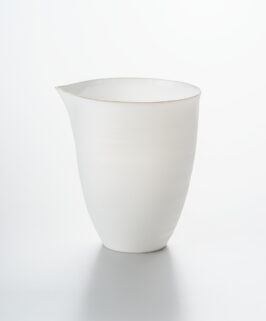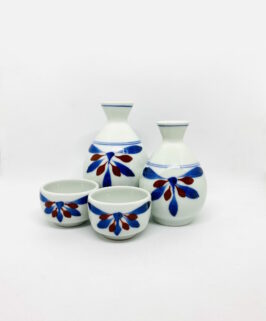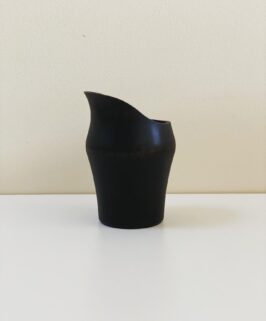Description
Suichoko is more than tableware. Simple yet stunning, it is the icon of Ohashi design, a true piece of art.
A 2011 Good Design Award winner, Suichoko applies traditional techniques to create a revolutionary Masu like no other.
Great for drinking Sake, Suichoko is also popular as a base for various displays.
Masu boxes are made in accordance with traditional measurements that are still used to measure Sake today. The volume of each size is as follows:
- Goshaku Masu (67mm×67mm×47mm)
- Hasshaku Masu (82mm×82mm×51mm)
- Ichigou Masu (85mm×85mm×56mm)
- Nigouhan Masu (115mm×115mm×64mm)
- Gogou Masu (140mm×140mm×76mm)
- Isshou Masu (172mm×172mm×93mm)
The Masu box has been in use for over 1300 years. The traditional sizes of the Masu box were regulated some 500 years ago and have not changed since.
There are three traditional units in Japan. They are called the Shaku, the Gou, and the Shou. The size of these units get bigger in this order.
1 Gou or Ichigou , is 10 Shaku, at approximately 180ml.
1 Shou is 10 Gou, which is about 1800ml or 1.8 liters.
1 Shaku, or Isshaku, as said in Japanese, is roughly equivalent to 18ml.
Originally a measuring cup for foods such as rice and soy sauce, the Masu was used to measure rice when it was still used as a form of currency. For the Japanese people, the Masu was as valuable and important as the rice it contained, and this tradition remains crucial to the lives of the Japanese to this very day.
More recently, the Masu has become widely acknowledged as a vessel for serving Sake, as well as a symbol of good luck. The term “Masu” translates to “growth” in Japanese, and is thus an icon of prosperity and great happiness.
The Masu box is an extremely versatile instrument. Besides from being a token of good luck, it has traditionally been used as a measuring cup and a sake vessel. Masu is also an ideal item for keeping accessories, holding a memo pad, or as a gift of celebration. Your imagination is the limit when it comes to inventing creative ways to use the Masu box.
The purchased products will be delivered to you within 2-10 working days (Royal Mail Signed for 1st class delivery) if the products are immediately available, and it may take up to 30 days or more if the products are made to order or out of stock.
You will receive email confirmation on your estimated delivery date from us if the products are made to order or out of stock. There are occasionally extended delays on the delivery, in which case, we will notify you as soon as possible.
These are all handmade products and there will be some minor variation in colours and shapes from one to another. It is a part of their charm and I hope you anticipate it to an acceptable extent. In case of any breakage or damage on the product as a result of delivery, please kindly notify us immediately by email with the photo of broken/damaged product attached. We will replace them with a new product if the breakage and damage have been caused by our delivery.
The products should be returned within 14 days from the purchase in the exactly same condition as original and, in that case, the full price of the product will be refunded. The initial and returning delivery fees of returned products are payable by the customer and House of Sake cannot bear the cost of the initial and returning deliveries.
Refunds will be made immediately once the returning products are received by House of Sake in appropriate condition.
International Delivery
Since the United Kingdom has left the EU please note that any duty and tax are now payable by the customer when the goods are processed at the destination country and this now includes EU countries. House of Sake cannot be responsible for such payments. If an order is returned to us because any customs payments have not been made House of Sake will not issue any refunds to the customer concerned.
Please note that the Royal Mail postage methods have different compensation attached to them. If you have chosen the postage with much lower compensation total than your entire order, House of Sake can only issue a refund equal to the total of the compensation stated by Royal Mail.
1) 1st Class Signed For and 2nd Class Signed For have compensation of £50
2) Royal Mail Special Delivery Guaranteed by 1pm has compensation of £500***
3) Royal Mail Tracked 24, 48 with/without signature have compensation of £100
***if your order value is more than £500, and you have chosen Royal Mail Special Delivery Guaranteed by 1pm, we may need to contact you for alternate posting methods with additional cost.
Events
Event products have their own individual delivery & return terms and conditions. The terms and conditions above
will not necessarily apply.


